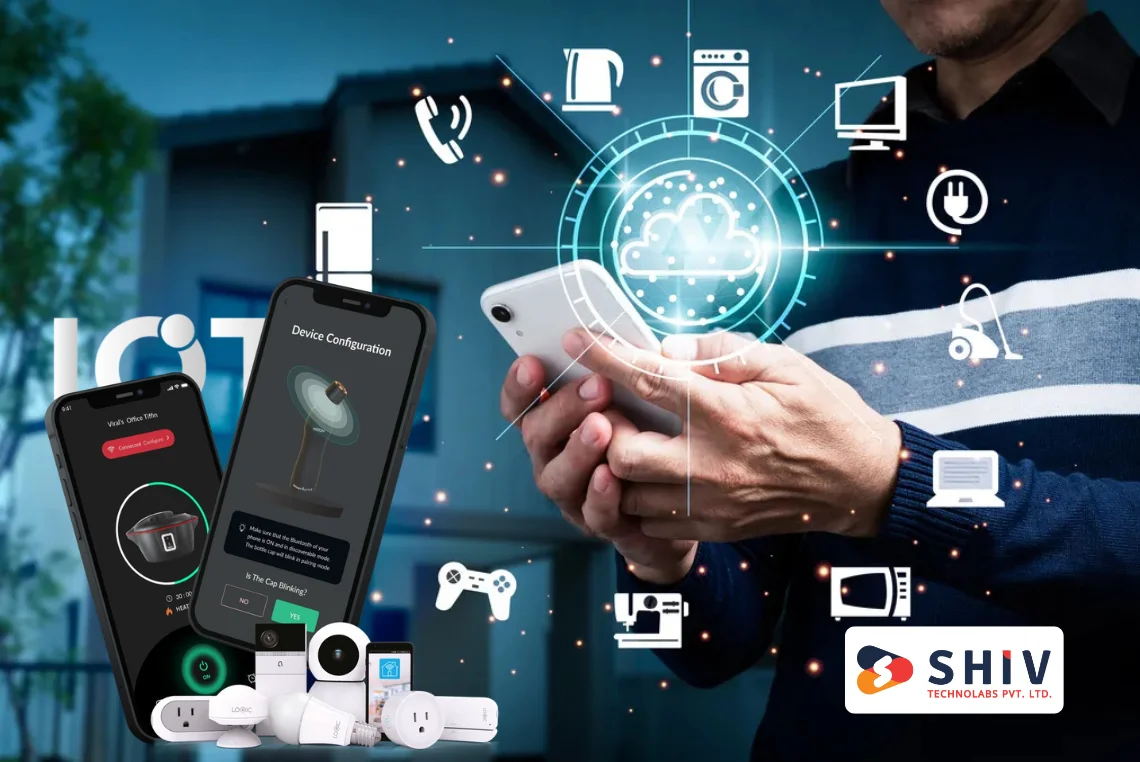Table of Contents
Buildings aren’t just physical spaces anymore. They’re turning into systems that can think for themselves. With IoT tech in place, a building can adjust lighting, manage airflow, and even notify staff when something’s off—automatically.
And no, it’s not just a concept for high-end tech parks. You’ll find this shift happening in clinics, schools, residential towers—even in regular office spaces.
What’s the result? Lower bills, better comfort, and fewer surprises.
This article walks you through how IoT works in real buildings, why it’s catching on fast, and what steps you can take to start applying it to your setup, new or existing.
Backed by Market Trends
A 2021 report by Markets and Markets valued the smart buildings market at around $72.6 billion, and that number is projected to hit $121.6 billion by 2026, growing steadily at a 10.9% CAGR.
The reason? A growing push for buildings that use less energy, meet stricter environmental rules, and help cut unnecessary operating costs.
The trend is clear: investing in connected infrastructure is no longer a futuristic idea—it’s a practical decision that pays off.

What Is IoT for Smart Buildings?
IoT in smart buildings refers to a network of devices that quietly manage many day-to-day operations—things like temperature control, lighting, ventilation, and utility tracking.
These devices include motion sensors, power meters, environmental monitors, and cloud-based software that work together in the background, doing tasks that used to require manual oversight.
Think of it this way: the building learns. An empty room? The lights switch off. Too much humidity? The system adjusts airflow automatically. Water usage spikes? You get a real-time alert.
All of this data doesn’t just sit idle. It gets sent to cloud platforms where building managers can see what’s going on from a single dashboard—or even their phone.
It saves time, avoids waste, and gives you a clearer picture of how the building runs on a daily basis.
Key Use Cases of IoT in Smart Building Systems

IoT plays a practical role in how buildings operate daily. From energy management to tenant safety, here are the most valuable use cases that show how smart buildings function with IoT systems in place:
# Energy Monitoring and Smart Lighting Control
IoT sensors track real-time energy usage across the building. This data helps adjust lighting, heating, and cooling based on room occupancy, time of day, or sunlight exposure.
Example:
Motion detectors automatically turn off lights in empty conference rooms. Smart thermostats adjust temperatures in underused zones to avoid energy waste.
Results:
- Lower electricity bills
- Reduced carbon output
- Increased equipment lifespan
# HVAC Automation and Air Quality Management
Smart HVAC systems use temperature, humidity, and air quality sensors to maintain indoor comfort while using less energy. They react to occupancy levels and weather changes without manual control.
Example:
A building’s ventilation automatically increases in rooms with rising CO₂ levels or high humidity during peak hours.
Benefits:
- Better indoor air
- Healthier spaces for tenants
- Less strain on HVAC equipment
# Predictive Maintenance and Equipment Monitoring
IoT sensors on elevators, motors, pumps, and HVAC units monitor performance metrics like vibration, temperature, or power usage. They alert maintenance teams before breakdowns occur.
Example:
A rooftop air conditioning unit shows unusual vibration. The system sends a warning to the maintenance dashboard, avoiding a full breakdown.
Impact:
- Fewer emergency repairs
- Less downtime
- Predictable maintenance schedules
# Smart Access Control and Building Security
IoT-enabled access control systems replace traditional keys and ID cards. Mobile apps, facial recognition, or smart badges can be used to enter rooms, with access logs stored securely.
Example:
Only authorized staff can enter the server room, and entry times are logged automatically.
Advantages:
- Controlled access to sensitive areas
- Real-time entry logs
- Remote locking and unlocking
# Water, Waste, and Utility Monitoring
IoT can also monitor water leaks, detect overflowing bins, or report unusual utility use, helping building managers react faster.
Example:
A water meter detects a continuous leak overnight and sends an instant alert, preventing property damage.
Outcome:
- Reduced utility bills
- Faster response to issues
- Better resource management
These use cases show how IoT helps buildings work smarter, not harder.
Also Read: IoT in Manufacturing
Steps to Implement IoT in a Smart Building Setup

Transitioning to a smart building setup doesn’t need to happen all at once. The best results often come from starting small, focusing on a few systems, and expanding over time.
Here’s a step-by-step approach to help you begin:
- Identify Primary Objectives: Focus on solving one or two key problems, like high energy use, poor air circulation, or frequent equipment failures.
- Conduct a Site and System Audit: Check what infrastructure already exists. Some HVAC systems, meters, or lighting controls may be IoT-ready.
- Map Out High-Priority Zones: Select areas where you’ll see the most immediate impact, such as lobbies, meeting rooms, or server areas.
- Choose Compatible IoT Devices: Pick sensors based on your goals: motion detectors, temperature sensors, air quality monitors, or energy meters.
- Pick a Centralized IoT Platform: Use a dashboard or software that connects all your devices, provides real-time insights, and sends alerts when action is needed.
- Plan for Network Requirements: Make sure your building has reliable Wi-Fi or choose alternative communication networks like Zigbee or LoRaWAN where needed.
- Set User Permissions and Roles: Define who can control or monitor the system—maintenance staff, security personnel, or building managers.
- Begin with a Pilot Implementation: Test the setup in one section of the building. Gather feedback and performance data before expanding.
- Train Your Team: Give your staff a basic understanding of how to read dashboards, respond to alerts, and maintain sensors.
- Track, Adjust, and Scale: Monitor the system regularly, fine-tune settings, and expand to more areas once the setup proves effective.
By following these steps, you reduce setup risks and ensure the changes you make deliver value. A phased approach also helps your team adapt to new systems without major disruptions.
Ready to Build Your Smart Building System?
Whether you’re looking to cut energy costs, improve security, or gain better control over building operations, Shiv Technolabs can help you take the next step. Our team specializes in developing IoT-based smart building solutions—tailored to your space, systems, and business goals.
From selecting the right sensors to building powerful dashboards, we provide end-to-end support to get your smart building project off the ground.
Partner with Shiv Technolabs and bring smarter control, better insights, and real-time automation to your building.
📩 Contact us today to start planning your IoT-powered building setup.
Conclusion
IoT is no longer limited to smart homes or experimental labs—it’s now a key part of modern building management. From energy savings to real-time system monitoring, IoT helps make buildings safer, more efficient, and easier to manage.
For building owners, facility managers, and developers, now is the time to act. Whether you’re designing a new space or updating an existing one, IoT offers the tools to improve performance without added complexity.
With the right strategy and a trusted technology partner, building smart doesn’t have to be complicated. It starts with one step, and that step can lead to long-term savings, smoother operations, and more value from your property.

























